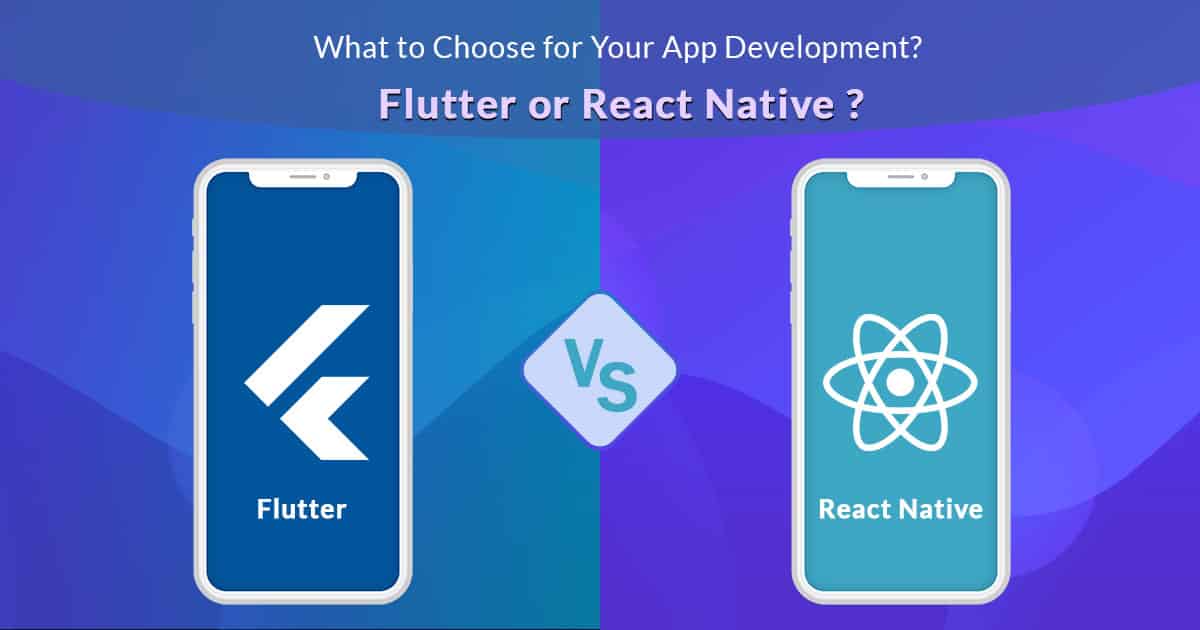In 2023, mobile app development has become a crucial aspect of modern businesses, and choosing the right framework for building mobile apps can be a daunting task. Two of the most popular frameworks for developing mobile apps are Flutter and React Native. In this blog, we will compare Flutter and React Native to help you choose the right framework for your app development needs.
Flutter:
Flutter is a mobile app development framework that was launched by Google in 2017. It is an open-source framework that allows developers to build high-quality mobile apps for Android and iOS using a single codebase. Flutter uses the Dart programming language, which is also developed by Google.
Pros of Flutter:
- Fast development: Flutter has a hot reload feature that allows developers to see changes in the app code in real-time, making it faster to develop and test new features.
- Good for UI: Flutter has a built-in widget library that allows developers to create beautiful and responsive UI designs that can be easily customized.
- Single codebase: Flutter allows developers to use a single codebase for building apps for both Android and iOS, which reduces development time and costs.
- Performance: Flutter apps are known for their fast performance and smooth animations, making them ideal for building high-performance apps.
Cons of Flutter:
- Limited community support: Flutter is still a relatively new framework compared to React Native, so it has a smaller community and fewer resources.
- Dart language: Dart is not as popular as other programming languages like JavaScript, which could make it harder to find developers with expertise in the language.
- Large app size: Flutter apps tend to be larger in size compared to other frameworks, which could be a disadvantage for users with limited storage space on their devices.
React Native:
React Native is a mobile app development framework that was launched by Facebook in 2015. It is an open-source framework that allows developers to build mobile apps for Android and iOS using a single codebase. React Native uses JavaScript as its programming language.
Pros of React Native:
- Large community: React Native has a large and active community of developers, which means there are plenty of resources available online and a lot of support available.
- JavaScript language: JavaScript is one of the most popular programming languages, which makes it easier to find developers with expertise in the language.
- Good for hybrid apps: React Native is ideal for building hybrid apps that can run on both Android and iOS devices.
- Third-party libraries: React Native has a vast library of third-party libraries that makes it easy to add features to your app without having to write the code from scratch.
Cons of React Native:
- Performance: React Native apps can sometimes have slower performance compared to native apps, although there have been significant improvements in recent years.
- Limited UI capabilities: React Native’s UI capabilities are limited compared to Flutter, making it harder to create complex UI designs.
- Debugging issues: Debugging React Native apps can be challenging, especially when it comes to debugging native modules.
Conclusion:
In conclusion, both Flutter and React Native are excellent choices for mobile app development in 2023. The choice between the two frameworks ultimately comes down to your specific needs and preferences. If you are looking for fast development, high-quality UI designs, and excellent performance, then Flutter may be the best option for you. On the other hand, if you value a large and active community, good hybrid app capabilities, and easy access to third-party libraries, then React Native may be the better choice.
